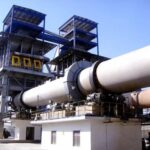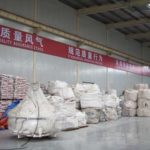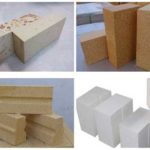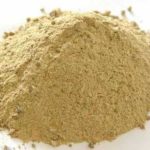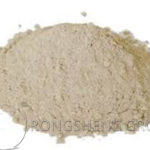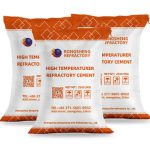With the continuous development and improvement of the technology level of cement industry kilns, my country’s cement kiln refractory materials have experienced a development process from scratch, from single variety to matching, and from low quality to high quality. Up to now, whether it is the variety, quantity, quality of refractory materials, their production process and equipment level, or the use and reasonable configuration of refractory materials, they have all developed and progressed to a great extent.
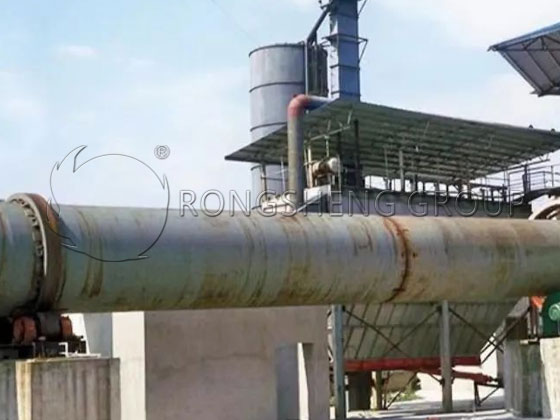
New Dry Process Cement Kiln Mouth Castable
For new dry process cement kilns, complex structures and energy-saving requirements also make the design of brick type and kiln lining relatively complex. In some parts of cement kilns, especially those parts where refractory bricks are not suitable due to complex structures or kiln deformation, refractory castables are more suitable than shaped bricks. In the new dry process cement burning system, the kiln mouth is a very critical and special part. The use conditions of this part are complex and harsh; the lining material is damaged quickly, and the replacement of the lining must be carried out after the kiln is stopped and cooled. Therefore, the quality of the kiln mouth lining material directly restricts the operation rate of the clinker burning system and the output of cement clinker.
According to data, more than 80% of kiln shutdowns are caused by the erosion of local refractory materials. At present, the new dry process cement kiln mouths in China generally use refractory castables as lining materials, and the service life of the refractory castables used in the kiln mouths of large dry process cement kilns is generally 4 to 6 months. By selecting low-cost raw materials to determine the reasonable aggregate composition, we can develop high-quality, low-cost high-alumina refractory castables for cement kilns. This can not only improve the performance of refractory castables for kilns but also help companies reduce production costs and improve market competitiveness. It is a reasonable and effective use of resources.

Effect of Aggregate Composition on the Performance of Cement Kiln Refractory Castables
By changing the aggregate composition to make different formulas of castables, experiments were conducted, and the relevant properties of each sample were measured. Through the analysis and discussion of the experimental results, the following conclusions were drawn:
1) The performance of the castables prepared is different for different types of refractory aggregates. That is, the quality of refractory aggregates directly affects its performance. When low-cost raw materials, first-grade alumina, gradually replace other raw materials, the mechanical properties of the castables obtained are generally reduced in general. In terms of various properties and costs, formula S4 (aggregate is first-grade alumina/special grade alumina) is the best aggregate choice.
2) When the aggregate contains silicon carbide, as the silicon carbide content increases, the flexural and compressive strengths of the refractory castables gradually decrease, and the thermal shock resistance is better.
Construction of Refractory Castables for Rotary Kilns
Preparatory work before the construction of refractory castables for rotary kilns
Before the construction of refractory castables for rotary kilns, it is necessary to weld anchors, lay calcium silicate boards and support molds on the construction body. These three steps seem to be independent processes, but they all play a key role in the later construction of refractory castables.
Welding of anchors
The materials of anchors are generally V-shaped, Y-shaped and U-shaped. The material selection, diameter and length of the anchors must be selected according to the requirements of the drawings. Steel with reasonable composition must not be cut corners. The two forked heads are equipped with plastic caps. Rust removal is required before use, and the floating dust on the surface of the welding part is cleaned. The spacing of the anchors is preferably 150mm, and the spacing can also be adjusted appropriately according to different parts. When welding, the specified welding rod should be used, the distance error between the anchor and the steel plate should be controlled within 5mm, and the welding flux skin should be removed. The root of the anchor should be welded full and all four sides should be welded. The welded anchor should be knocked with a small hammer to check whether it is firm. It is considered as the standard if it cannot be knocked off. Pay attention to leaving expansion joints. The plywood should be laid in a straight line. The welded anchor should be treated for thermal expansion. Brushing asphalt paint, wrapping with tape or wearing plastic pipe (1-2mm thick pipe skin) are all OK.
Laying calcium silicate board
Use adhesive to tightly adhere the calcium silicate board to the equipment shell, or use fine iron wire to build a mesh to fix the calcium silicate board. When wrapping the anchor, it is best to reserve a spacing of ≤50mm×50mm without sticking the calcium silicate board. This not only plays a role in heat insulation, but also prevents the hot air from entering and burning the anchor after the castable cracks. Now many construction teams do not lay calcium silicate boards to avoid burning the anchors. The surface temperature of the equipment is nearly 60℃ higher, and the heat consumption increases. Therefore, it is best to take both into account, both heat insulation and firmness. The calcium silicate board should be brushed with waterproofing agent on the side close to the refractory material to prevent it from absorbing moisture in the castable and causing the castable to dry and crack.
Supporting mold
The mold can be made of hardwood or 3mm thick steel plate. The template should have sufficient strength, no deformation, no displacement, the template surface should be flat, and the supported mold should not leak slurry. The steel template should be coated with a release agent, and the wooden template should be painted with waterproof paint. Reusable formwork must be cleaned and then painted before use. In order to increase the construction speed, some construction teams set the mold too high and pour a large amount of material at one time, which will cause excessive water addition to the castable and loose vibration. Poor mold strength causes deformation of the lining or increases the amount of water added to the castable, affecting the quality. The mold should be flat on the side close to the castable to prevent steps from appearing in the lining. The mold should be firmly fixed to avoid deformation of the mold during pouring and vibration, or even falling, which will lead to the need to re-support the mold. The mold surface should be oiled for easy removal. For some parts where the construction is difficult and the mold is not ready to be removed, wooden molds must be used. The trip bars on the surface of the mold should be made of wooden strips or bamboo, and steel bars are strictly prohibited. Avoid the falling of steel bars after production to block the feed pipe or damage the equipment. The steel plate mold must be removed to avoid thermal expansion and falling.

The Correct Way to Construct Refractory Castables for Rotary Kilns
After the rotary kiln lining has been welded with anchors, calcium silicate boards have been laid, and the molds have been supported, the construction of refractory castables should be carried out in the following manner.
Inspection
- Check the packaging and factory date of the castables. The general shelf life is 6 months. Avoid moisture and conduct a preliminary test to check whether it is invalid.
- Check the appearance and cleanliness of the equipment to be cast.
- Check the integrity of the construction machinery and tools. Vibrating tools and other tools must have intact spare parts; check the type, size, layout and welding quality of the anchors. Metal anchors must be treated with expansion compensation such as asphalt paint and plastic caps.
- Check the surrounding refractory brick linings and insulation layers to prevent castable water loss.
- Check the construction water. The water quality must reach the quality of drinking water.
- Check whether the castable equipment has loose parts (such as kiln mouth guard iron). If loose, it must be tightened with iron plates and then welded.
If the above items fail to meet the inspection standards, they should be treated and qualified before construction. Expired and invalid materials shall not be used. During the construction of castables, it is necessary to ensure that there is no power outage, water outage, or interruption of construction. Especially when pouring the top of the kiln head cover, if the construction is stopped in the middle, the casting layer will be sandwiched. The hot air entering the layer seam will burn the anchors, and the castable will collapse.
Strictly control the amount of water added
The amount of water added to the castable should be strictly controlled according to the instructions for use and should not exceed the limit. Under the premise of ensuring the construction flow performance, the amount of water added should be less rather than more. Pay attention to using clean water to avoid other components or debris in the water affecting the solidification.
Mixing of castables
The mixing time of castables should be no less than 5 minutes, and manual mixing is strictly prohibited. When mixing, dry mix in advance, and then add 80% of the required water to mix after dry mixing. Then, depending on the degree of dryness and wetness, slowly add the remaining water and continue to mix until a suitable working consistency is obtained. When mixing castables of different qualities, the mixer should be cleaned first.
Use of castables in bags
The castable must be used in whole buckets and bags. The mixed castable is generally used up within 30 minutes. In a high-temperature and dry working environment, this time should be appropriately shortened. The castable that has been initially solidified or even agglomerated must not be poured into the mold frame. It is strictly forbidden to add water and mix it for secondary use.
Vibration construction of castables
The castables poured into the mold should be immediately vibrated in layers with a vibrating rod. The height of each layer should be ≤300mm, and the vibration interval should be about 250mm. Try to avoid touching the anchors during vibration, and do not vibrate or re-vibrate at the same position for a long time. After seeing the slurry on the surface of the castable, the vibrating rod should be slowly withdrawn to avoid segregation and voids in the castable layer. After the casting is completed, the cast body cannot be subjected to pressure or vibration before solidification.
Pour in blocks and reserve expansion joints
When pouring in a large area, it is necessary to construct in blocks, and the area of each pouring area should be 1.5-2.0m. Expansion joints should be left every 2.0m with plywood, and no omissions should be made. Expansion joints should be left at the intervals between anchors.
Maintenance after pouring
After the surface of the castable is dry, the part exposed to the air should be immediately covered with plastic film. After the initial setting, it should be regularly watered to keep the surface moist. The curing time is at least 2 days. Watering should be frequently done on the first day. After the final setting of the castable (generally 6-8h) is reached, the side formwork can be removed and watering can be continued for curing, but the load-bearing formwork must wait until the strength reaches 70% (generally 48h) before the formwork can be removed.
Repair after demolding
After the formwork is removed, the cast body should be inspected in time, and quality problems such as honeycombs, peeling, and voids should be handled and repaired in time. When the problem is serious, the defective part should be chiseled out to expose the anchor, and then filled and compacted with the same quality of castables, and then continued to be maintained. It is forbidden to use cement mortar as a substitute.
In order to pursue construction speed, some construction teams arbitrarily increase the amount of water added to the refractory castables. The mixed castables can be transported to the mold like running water with a rubber hose several meters or even more than ten meters long. The mold strength is poor, resulting in deformation of the lining or increasing the amount of water added to the castables, affecting the construction quality. The mold is not supported, and the castables are applied manually. This situation is generally used in the construction of the feed pipe lining, and sometimes even in the construction of some preheater cone linings. Expansion joints, gate valves, and other equipment should be prefabricated on the ground before installation. These prefabricated parts have complex geometric dimensions, so they have strict requirements for mold making. The mold is made of metal steel plates and cannot be deformed during construction. Therefore, the mold support must be firm, and the mold support position must be correct.
Leave Your Requirements on RS Kiln Refractory Bricks And Castable Materials! We Will Reply You In 12 Hours!:

